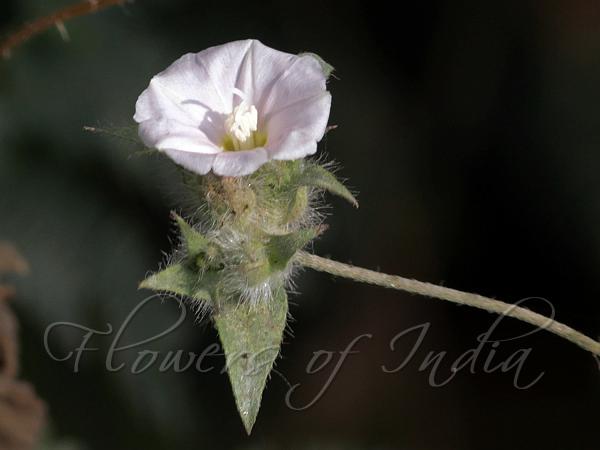|
| Clustered Bindweed |
|

|

| File size | 228744 |
| Original date | 12/14/17 10:34 AM |
| Resolution | 1500 x 1125 |
| Flash | Flash did not fire, auto |
| Focal length | 163.0mm |
| Exposure time | 1/250s |
| Aperture | 8.0 |
| Focus Distance | |
| Metering Mode | Multi-segment |
| Camera make | Canon |
| Camera model | Canon EOS 700D |
| Sensor type |
|
|
|
|
Photo: |
Botanical name: Convolvulus glomeratus Family: Convolvulaceae (Morning glory family)
Synonyms: Convolvulus auricomus, Convolvulus arabicus, Ipomoea auricoma
Synonyms: Convolvulus auricomus, Convolvulus arabicus, Ipomoea auricoma
Clustered Bindweed is a biennial or perennial herbs,
1-2 ft, creeping with a diffuse or twining habit. Stems are appressed
velvet-hairy. Leaves are somewhat stalked,velvet-hairy, 1.8-2.8 cm
long, 4-8 mm wide, rarely larger, ovate or lanceshaped-oblong to
lanceshaped, tip pointed, lower leaves narrowed, upper eared. Flowers
are borne in heads of 4-10, in leaf-axils. Flower-cluster-stalks are
1-4 cm long, velvet-hairy. Bracts are about 1.2 cm long, ovate,
tapering. Sepals are unequal, densely silky-woolly, outer sepals 8-11 x
3.5-4.5 mm, elliptic-ovate, long tapering, inner sepals 6.5-10 x 2 mm
long, lanceshaped, tapering. Flowers are white to light purple, 8-12 mm
long, hairy on the folds outside, the tube hairless. Filaments are
unequal. Ovary is hairless, on a cup-shaped disc, style hairless, about
4 mm long, stigma short, cylindrical. Capsules are ovoid, 5 x 4 mm,
hairless. Seeds 2-4, dark brown, indistinctly tuberculate. Clustered
Bindweed is found in N.E. Africa, (N. Sudan, Egypt), Arabia, Iran,
India, Pakistan, Afghanistan. The plant is used as fodder for goats and
camels, also used as a purgative. Flowering: December-August.
| Identification credit: Prashant Awale | Photographed enroute to Jodhpur, Rajasthan. |
• Is this flower misidentified? If yes,